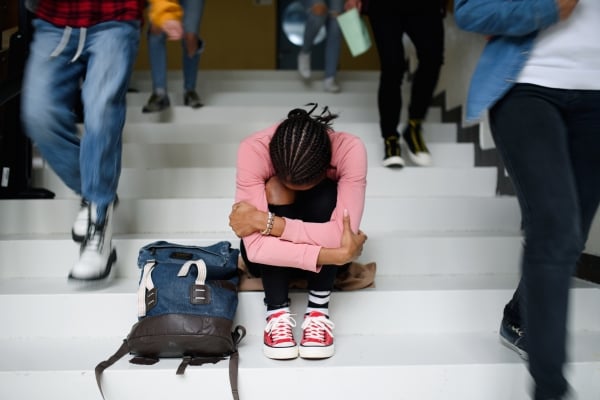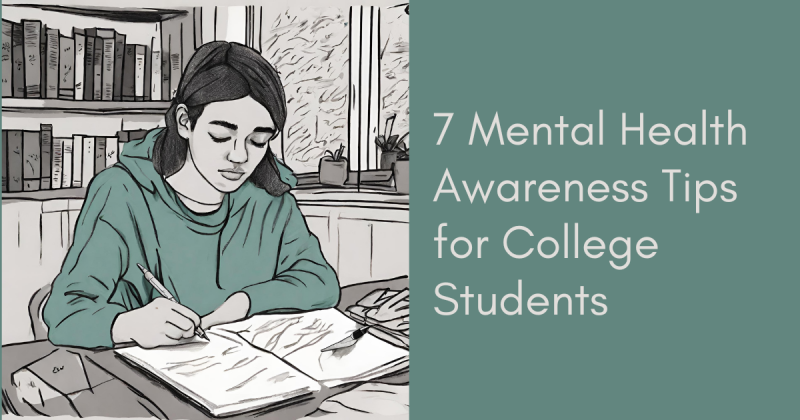How colleges each aid and hurt scholar psychological health

Establishments can make a destructive natural environment for students’ mental wellbeing, notably for college students of color or all those taken out from their communities of origin.
Halfpoint/iStock/Getty Pictures Plus
College college students face a broad array of worries in their psychological wellness, and establishments may be compounding the issue.
A May perhaps report commissioned by the instructional guide group Higher education Futures Basis facts the structures of increased instruction that can impression the mental nicely-remaining of its learners, the two positively and negatively.
“While we know that increased schooling establishments are not able to entirely eliminate these pressures from learners’ lives, we at University Futures feel larger instruction establishments are liable for supporting their students’ results, and that university student results is inextricably linked to university student very well-being,” writes April Yee, senior program officer at the basis, which is focused on degree attainment in California, in the report.
The report is intended to assist institutional leaders and practitioners attract connections concerning their do the job and research findings to profit pupils.
Throughout the exploration, marginalized learners, which include pupils of coloration and LGBTQ+ pupils, are held in concentration, as establishments can neglect or underserve assorted group users and their one of a kind demands.
Places of hurt: The scientists identified 5 regions in which colleges and universities can negatively effect students’ psychological well-getting.
- Establishments advertise social isolation, specially for minority learners. Pupils come across they have to turn out to be socially and academically built-in into campus to do well, and if they are unsuccessful to do so, can turn out to be socially isolated and depressed. This transpires most often with minority college students who are unable to relate to the larger sized campus populace. Institutions also take away learners from their communities of origin, which can power learners to decide on concerning their heritage or their campus community.
- Establishments sustain hostile climates. Campus climates can be hostile toward marginalized communities, like LGBTQ+ learners, pupils of shade or undocumented pupils. Establishments that do not acknowledge and deal with hostilities, like microaggressions or overt bigotry, damage their learners.
- Institutions encourage individualistic, aggressive attitudes. The aggressive mother nature of school admissions is apparent and can be perpetuated during the college student knowledge, in grades, investigation, internships, graduate systems and much more. Opposition among the faculty pupils can be tied to detrimental psychological wellbeing results like stress and melancholy and can lower students’ interest in building relationships.
- Institutions uphold substantial expenditures and boost financial debt. Colleges and universities can exacerbate students’ economic positions, which are generally precarious, thanks to large fees of tuition and other elements. Quite a few pupils enter university underprepared to navigate the buildings of greater education and learning at all, substantially less to determine obtainable economic aid alternatives. Education financial debt is destructive to students’ mental well being, specifically pupils of shade and first-era students.
- Establishments generate obstacles to accessing mental overall health. Many schools have complicated mental wellness devices that make resources complicated to locate and use. For minority pupils, experience understood and observed by the campus counseling staff members can also be a barrier, as they do not have the exact history, shared knowledge or enough cultural competency.
Opportunities to aid: Irrespective of some of the buildings in increased education and learning that presently impede nutritious effectively-staying among learners, there are alternatives present to enrich the student working experience that are distinctive to colleges and universities.
- Educate proactive self-treatment. Faculty and workers can generate assignments for pupils to market creation and utilization of self-treatment techniques, like healthful snooze, diet plan and physical exercise patterns as effectively as spirituality, mindfulness and gratitude. By leaning into previously-current curriculum constructions, practitioners can influence pupil achievements from in and impression their friends by mutual help.
- Foster belonging as a result of connections. Social cohesion and belonging have been tied to reduced amounts of panic and depression. Optimistic connections to the two the campus group, like other learners, college or workers associates, and to a student’s local community of origin.
- Affirm and validate college students. Although greater instruction is developed to encourage and motivate college student successes, building day-to-day or micro affirmations to realize and validate the function of students is just as essential. An essay-creating assignment close to affirming a student’s values, for case in point, can improve pupil self-confidence and persistence.
- Embed assorted curriculum throughout disciplines. Ethnic experiments can advertise a sense of belonging and empowerment in addition to affirmation of a student’s lifestyle and belonging. Educators can integrate culturally pertinent and diverse curriculum into their programs to magnify this function.
- Offer culturally appropriate mental health programming. Culturally appropriate interventions can develop recognition of psychological overall health worries, facilitate open up dialogue, normalize dialogue of psychological wellbeing and advertise methods to help students navigate and cope with worries. Counseling practitioners really should also undertake instruction to offer helpful and culturally appropriate solutions for communities of coloration.
Trying to find stories from campus leaders, faculty associates and personnel for our Student Good results concentration. Share listed here.









